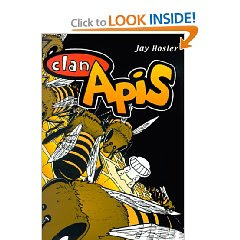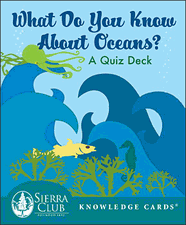This is a comic book of sorts about the life of bees. Quoted from a reviewer on Amazon: "Jay Hosler's Clan Apis is a rather brilliantly executed graphic novel format presentation of life in the beehive. Accurate, informative, totally engaging, the biology and life cycle of the bee is laid out with an anthropomorphic storytelling that is as fun as it is educational. Clan Apis is highly recommended reading for all ages -- especially for those who thought the life and world of the bee might just have some relevance for we mere humans living in our post-industrial, information age."
Super-smart Julian Calendar thinks starting junior high at a new school will mean he can shed his nerdy image–but then he meets Ben and Greta, two secret scientists like himself! The three form a secret club, complete with a high-tech lair. There, they can work to their hearts content on projects like the Stink-O-Meter, the Kablovsky Copter, and the Nightsneak Goggles. All that tinkering comes in handy when the trio discovers an evil scientist's dastardly plan to rob a museum. Can three inventors, armed with their wacky creations, hope to defeat this criminal mastermind?
Found this one at the library and still need to go get the parts for the pvc marshmallow shooter that Max wants to build. Really fun book with several projects, all in cartoon format.
Two-Fisted Science, a Xeric Award-winning and Eisner nominated original trade paperback, features true stories from the history of science. Some are serious, some are humorous, and most are a bit of both. Scientists highlighted include physicists Richard Feynman, Galileo, Niels Bohr, and Werner Heisenberg, but you'll find a cosmologist and some mathematicians inside as well. **Be warned that there is a page which contains a cartoon figure of a woman wearing next to nothing - in the story about Wolfgang Pauli** Happened to catch this in a review and checked on it - yep, there she was. This might be a big deal in your family - if so, you may opt to skip this one or figure out a way to put clothes on her with a sharpie!
Haven't held this one in my hands yet, but the premise of the story already has me laughing. This one's about Darwin in cartoon form trying to convince two follicle mites LIVING IN HIS LEFT EYEBROW (Mara and Willy) that evolution is indeed real. It sounds so off-the-wall! Again, this one may not resonate with your belief system, so take it our leave it.
Larry Gonick is a character! I've already mentioned one or two of his other cartoon guides in a previous post, The Cartoon History of the Universe and believe it or not, The Cartoon Guide to Sex which many parents have trusted to help explain those types of things to children when those children are deemed old enough. It's apparently a very thorough and scientific piece of writing that does not belittle the subject matter. Mr. Gonick is a fairly prolific and FUN comic book writer. His science is sound. These bear perusing first, though, before jumping in for an hour reading session with your kiddos before bed - there is some adult humor sprinkled in every now and then, stuff you may want to edit. He has several other comic books such as The Cartoon Guide to Genetics, The Cartoon Guide to Physics, The Cartoon Guide to the Environment, several about history and another about statistics.

































